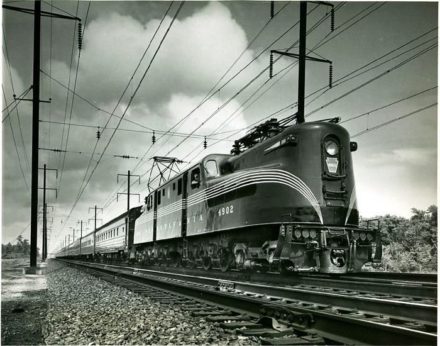
First Cross-Commonwealth Train
Have you ever imagined the challenges travelers in the early 1800s faced when trying to get from Philadelphia to Pittsburgh? The route was slow-going, potentially dangerous, and costly for businesses. People were on the look-out for a better way to travel.
When the Erie Canal opened in 1825, business owners in Philadelphia were concerned that the city’s port would become less useful. To try to gain a competitive edge over New York, in 1826 the Pennsylvania state legislature commissioned a statewide canal called the Main Line of Public Works. However, people realized a single canal would not be effective, so in 1834, portions of the Philadelphia and Columbia railroads were combined with an inclined plane and tunnel across the Allegheny Mountains, and canals up the Susquehanna, Juniata, Conemaugh, and Allegheny rivers to make one route. As an example of the impact of the Main Line, the Horseshoe Curve in Altoona reduced travel from Philadelphia to Pittsburgh from 3 ½ days to 13 hours.
Yet, the combination proved too cumbersome, as freight and passengers had to change cars several times along the route and canals froze in winter. A railroad across Pennsylvania was what was needed. The Commonwealth granted a charter to the Pennsylvania Railroad company in 1846 to build a private rail line to connect Harrisburg to Pittsburgh. The line is still in use today, taking Amtrak passengers across the state.
While the Pennsylvania Railroad company no longer exists, for the first half of the 20th century it was the largest railroad in the United States by traffic and revenue. In the 1920s, it operated more than 10,000 miles of rail and carried nearly three times the traffic of comparable rail companies. Its legacy lives on though. The majority of its existing lines are now owned by Norfolk Southern Railway, while Amtrak owns the electrified rail segment from Harrisburg to Philadelphia.
